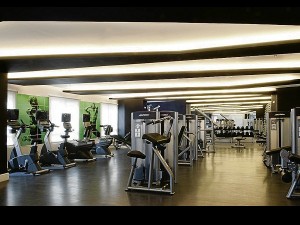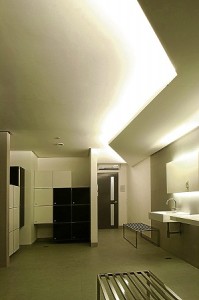The line is probably the most undervalued of all design elements. Often taken for granted, and yet not completely unnoticed, it is the only thing that can delineate shape and give volume to form. In geometry, it is used for measure, but in art, it is considered an element and a most basic component of any artistic creation.
A line is a length without a width. It is an infinite set of points that stretch or shorten in two directions, giving dimension, insinuating movement and creating forms from what could have been mere nothingness. It is a vital visual element in the world of aesthetics.
Lines define forms and sculpt them into a distinct character. In their subtlety, lines breathe life into two-dimensional and three-dimensional elements. The location and spatial arrangement of a point and a line are what give form to their particular quality.
The traditional six planes of a room—four walls, floor and ceiling—are defined by the corners where the surfaces intersect. Furniture pieces are shaped by the outline that defines their planes, and window and door openings are defined by their frames or by the edges where their surfaces meet the surrounding planes or walls. In their normal usage, lines can be manipulative and can affect the way we perceive two- and three-dimensional figures:
Lines set direction. They lead our eyes onto a certain path. Think about the lines that run straight or curve and in doing, define the roadway being driven through. Our eyes are pulled forward as the lines extend beyond our field of vision. It works very much like the lines that define the four corners of a hallway. They too pull your eyes through, which is the reason lines moving along the length of a space direct movement to the end of it, while those that traverse insinuate stoppage, or a slowing down. Skyscrapers work similarly as their vertical lines define the edges of the structures, thereby drawing our eyes upward to the sky.
Lines imply movement. Lines that draw the eyes make us follow the “point” as it moves to a certain length. It also makes us follow that extended point as it zigzags or curves, shoots up or trajects downward, or meanders and sways. In forms that emphasize movement, lines can exist in a multitude, like swells in the ocean or a pattern of railroading double lines. Similarly, the grains that run along a plank of timber with countless strokes seem to move not only in the direction of its length, but appear to reverberate along its width as well.
Lines manipulate scale. In a pattern or a design, applied lines that are widely spaced and thus create large patterns, make a surface or form appear smaller, and the surrounding space, bigger. Tiles have that effect on flooring: smaller tiles seem to shrink surface and expand space, while larger cuts make a space appear smaller. Lines can also define the size of other elements around it. The grid of windows on a building’s façade, gives one a sense of the floor-to-floor height, which in turn approximates the width of the building face.
Lines help determine depth. Lines recede and become thinner as they go deeper into a perspective, thereby making depth measurable by estimation. This is how one is able to tell how far down the hallway the door of a hotel room is—the other doors that precede it establish a regular pattern of lines that become shorter and thinner as they lie farther.
Lines express texture. Used numerously, lines can create a coarseness or fineness to a surface. The kind of tactile sensations perceived by the eye denote the quality of the surface. Remember that lines have no depth, so we are talking about perceived visual texture rather than real, tactile texture. Texture can make associations with other materials or even other forms. A multiplicity of horizontal and vertical lines can denote a woven texture, whether they were applied on an expansive veneer wall, or to a large mirror. Set diagonally, they evoke the texture of an expanded metal mesh; in varying curves, they feel like tiny ripples.
Lines express themselves stealthily in our everyday design experiences, camouflaged in the existence of many other design elements. Nothing can be seen by the eye until it is defined into a shape or form by the line. Without it, we will merely have a point afloat in space.
Contact the author through designdimensions@abi.ph or through our Asuncion Berenguer Facebook account.



